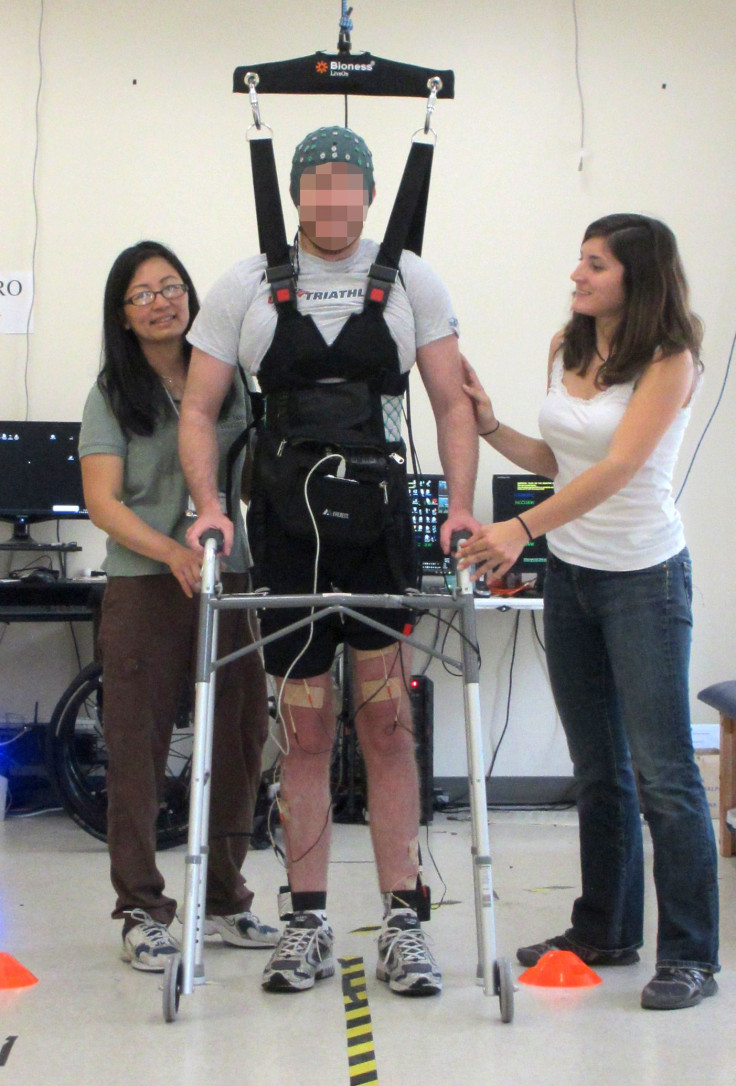'Brain power' helps paralysed man to walk again

A person with complete paralysis in both legs due to spinal cord injury was able to walk again using his own brain power, according to researchers. The preliminary proof-of-concept study, published in the Journal of NeuroEngineering and Rehabilitation, states that this is the first time for someone to restore his ability to walk without relying on manually controlled robotic limbs.
Using an electroencephalogram, or EEG-based system, the patient walked along a 3.66 metre-long course. The system takes electrical signals from the participant's brain, which then travel down to electrodes placed around his knees to create movement.
According to Dr An Do, one of the lead researchers involved in the study from University of California, Irvine, the brain can still generate robust brain waves that can be harnessed to enable basic walking even after years of paralysis. "We showed that you can restore intuitive, brain-controlled walking after a complete spinal cord injury. This noninvasive system for leg muscle stimulation is a promising method and is an advance of our current brain-controlled systems that use virtual reality or a robotic exoskeleton," Do said.
The researchers report that the patient underwent a 19-week testing period, which initially required him to do mental training to reactivate the brain's walking ability. They asked the patient to sit while wearing an EEG cap which can read his brain waves, after which he was trained to control an avatar in a virtual reality environment.
The patient, who suffered from paraplegia for five years, was also trained to recondition and strengthen his leg muscles. He practised walking while suspended five centimetres above ground, so he could freely move his legs without having to support himself. After 20 visits, the patient translated these skills to walk on the ground and wore a body-weight support system for aid and to prevent falls.
Since the study only involved a single patient, the team says further studies are needed to establish whether these results are true for a larger population of individuals with paraplegia. Dr Zoran Nenadic, the senior lead researcher of the study, said that once they confirmed the usability of the non-invasive system, they can explore invasive methods such as brain implants.
According to Nenadic, an implant may achieve an even greater level of prosthesis control because brain waves are recorded with higher quality. Such an implant, Nenadic said, could deliver sensation back to the brain, enabling the user to feel their legs.
Last month, a research team from Stanford University developed a new technique designed to make brain-controlled prostheses more precise. According to the team that conducted the study, this technique continuously corrects brain readings to give people with spinal cord injuries a more precise way to tap out commands using a thought-controlled keypad. The US Food and Drug Administration recently gave the team an approval to conduct a pilot clinical trial of their brain-controlled cursor on people with spinal cord injuries.
Contact the writer at feedback@ibtimes.com.au or tell us what you think below.





















